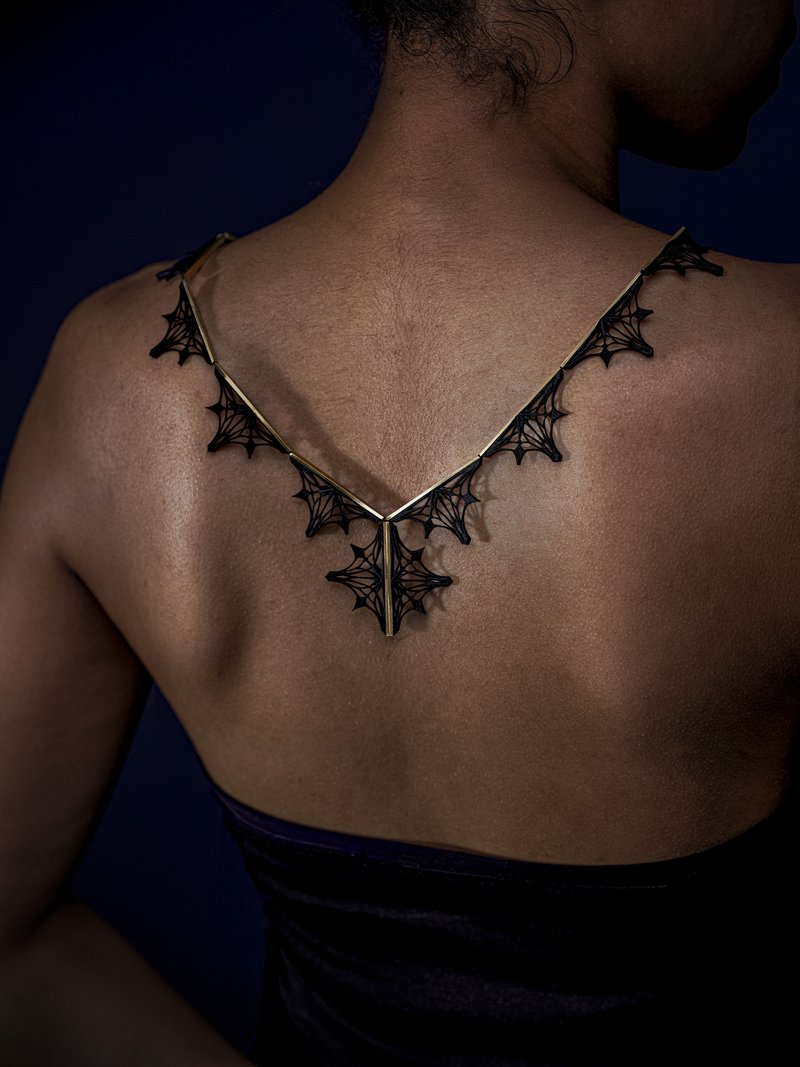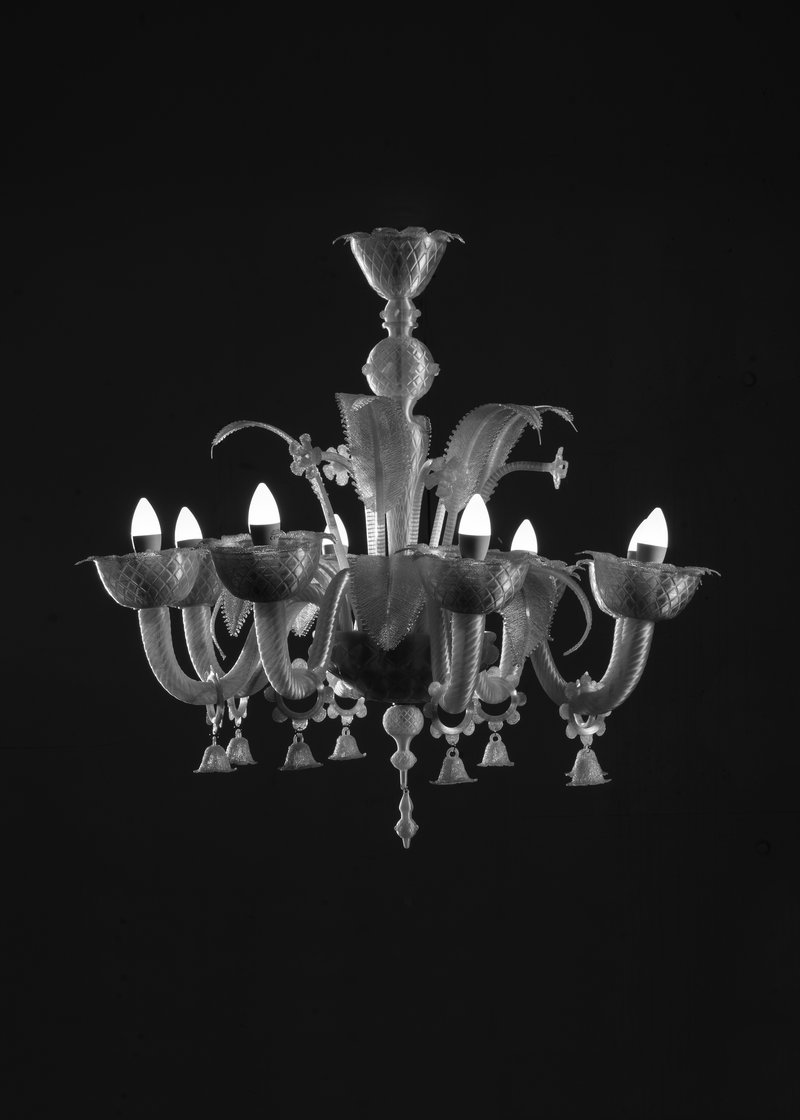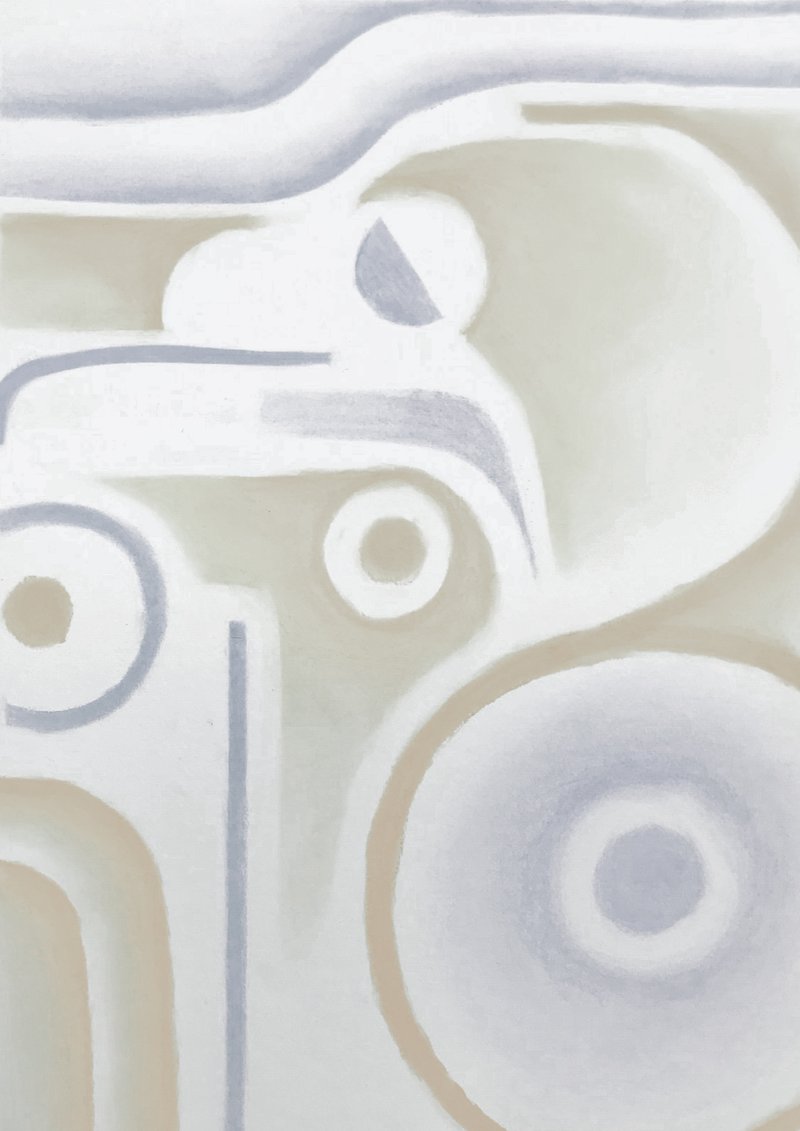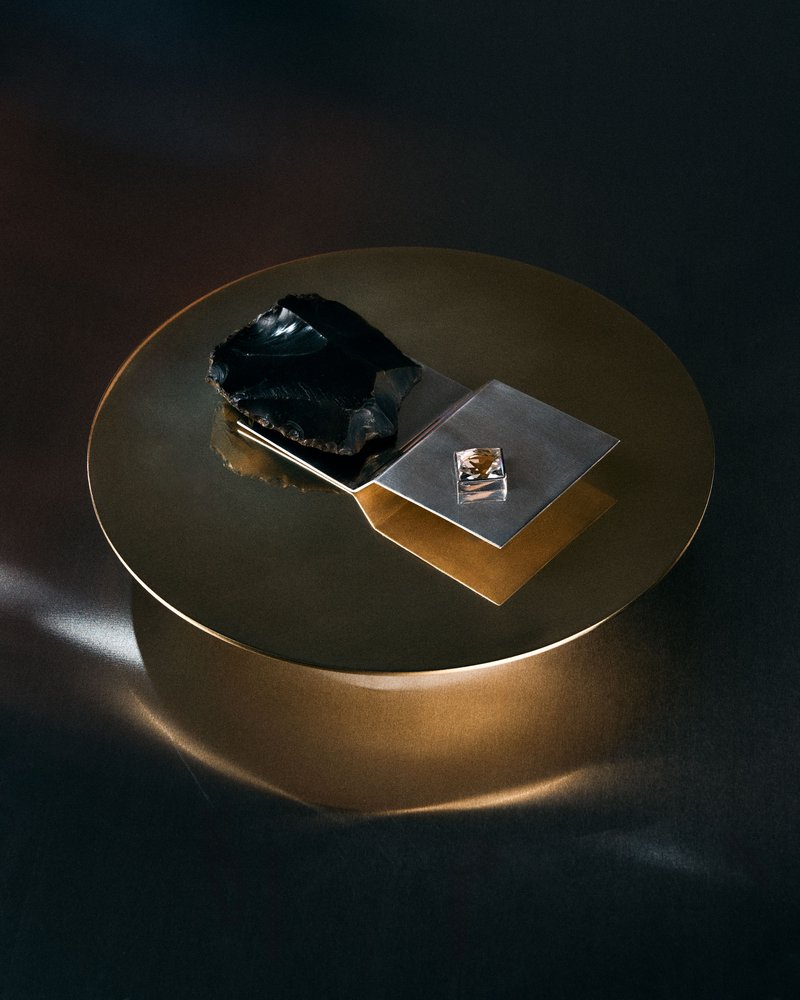For Spine, by Virginie Garcia, the aim was to conceive an object which clearly shows the properties of this unique textile. Spine is a basket whose structure is created by folds in a single piece of woven leather, inspired by origami, and thin strips of spring steel.
For Lampe, Josephine Choquet wanted to work on the elasticity and flexibility of woven leather. Like the hoop, or tambour, used in embroidery, the leather is stretched in a brass structure allowing for a smooth, clean surface. The oblique light given off by the neon tube at the base, reveals the beauty of the texture created by the weave.
JinSik Kim chose to draw animal shapes in order to return to the leather’s origin while highlighting its visual and tactile properties. Bearing in mind the endless size, colour and weave options that the woven leather brings, this series was designed with pure and relatively abstract lines whilst maintaining a varied and playful quality.
For Hesychia Petra Kuon was interested in woven leather’s qualities relating to sound and sound proofing. Thanks to this natural material and the fine weaving the Brussels Maison Charles Schambourg are able to produce, these modules can efficiently absorb sound. Thanks to a simple symmetrical frame, it is possible to create any composition with the colourful gradient design of the modules.
The Set de tables project by Leslie Landucci aims to highlight the sculptural qualities of woven leather by using it in a 3-dimensional manner. This collection of tables takes its reference as much from ancient woodworking techniques as it does from the world of sports and even the graphic qualities of traditional boiled sweets.










